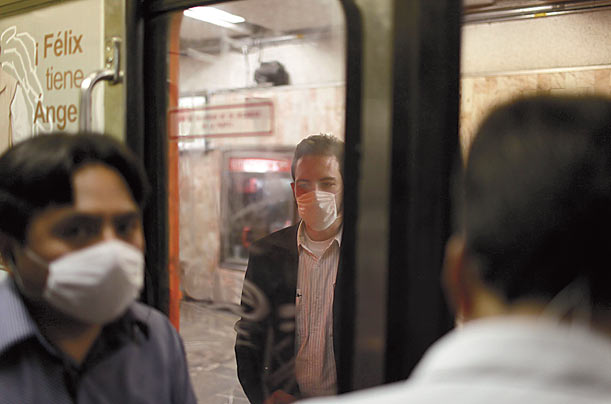
President Obama has often talked about the mess he inherited from his predecessor, but on this occasion, the worst imaginings of the Bush Administration served him well. Authorities in Mexico said 150 people are believed to have been killed by swine flu. More than 100 in seven other countries are infected. But it almost doesn't matter that Obama has had no Health and Human Services Secretary to manage the response — or a surgeon general or a head of the CDC or a border-patrol commissioner. The contingency plans were already in place.
In 2005, amid fears of bioterrorism or a deadly bird-flu outbreak, President George W. Bush proposed the $7 billion National Strategy for Pandemic Influenza, meant to boost the availability of antivirals, ventilators and vaccines. Bush's plan was never fully funded; $870 million for flu-pandemic preparedness was actually dropped from the stimulus bill earlier this year. Still, it allowed the CDC to send diagnostic tests to labs around the country to track the flu's spread, while 11 million courses of Tamiflu were made available. "We are seeing a much more clear and cogent response than in the past," says Laurie Garrett, senior fellow for global health at the Council on Foreign Relations.
Obama may also have been helped by a higher tolerance for calamity. After a winter of market mayhem, job losses and pirate attacks, our panic reflex may have toughened up a bit. We are always on alert now: the threat level is forever orange; the Internet fizzes with warnings and advice. This time, thousands of students stayed home from school in Texas, disrupting a day of standardized state tests, while in New York City, pharmacies reported a run on Tamiflu. While some measures may turn out to have been extreme, we have contingency plans for a reason. We still don't know how long this will last or how bad it will get. With any luck, this outbreak will let us know where our defenses need strengthening — without forcing us to rely on them.